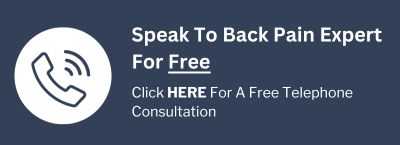The burden of back pain can often feel as heavy as a physical load, dragging down your spirits and limiting your mobility.
It’s an ailment that can creep into the lives of the most active among us, affecting the way we move, the way we rest, and even the way we feel. At Anti-Fragile Physical Therapy, we understand that dealing with back pain is no small feat.
That’s why we’re committed to providing you with not only the care you need but also the information to understand the root causes of your discomfort.
In this blog, we’ll unpack how stiff and tight muscles contribute to back pain and what steps you can take to alleviate this common but often misunderstood issue.
Understanding Back Pain: A Closer Look
Back pain can be a complex puzzle, with pieces that range from acute injury to chronic conditions.
Stiff and tight muscles, often overlooked, are crucial factors in this puzzle.
They can be the result of overuse, lack of movement, or even stress.
Conditions like muscle strain, myofascial pain syndrome, and tension knots are just a few examples of how muscle problems can manifest in real, tangible pain.
The impact of back pain extends beyond physical symptoms.
It can affect your emotional well-being, causing frustration, anxiety, and even depression.
Recognizing the interconnectedness of our body’s mechanics is the first step in addressing the issue holistically.
How Can Stiff and Tight Muscles Result in Back Pain: 5 Ways They Can
Reduced Mobility
Stiff muscles, especially in the hip flexors, hamstrings, and lower back, can restrict the spine’s natural range of motion.
This lack of flexibility forces the back to compensate by altering its alignment and movement patterns, which can lead to mechanical back pain.
To improve mobility, it’s essential to incorporate a regular stretching routine that targets all major muscle groups, focusing on dynamic stretches that mimic everyday movements to help increase functional flexibility.
Trigger Points
These are tight spots in the muscle tissue that can be extremely sensitive and can cause referred pain – meaning pain felt in another part of the body.
For instance, a trigger point in the gluteus muscles can send pain shooting down the leg or up into the lower back.
Therapeutic approaches like myofascial release, trigger point therapy, and massage can help release these knots.
Consistent self-care routines including the use of foam rollers, massage balls, or even professional physical therapy can be vital in managing these trigger points.
Compromised Posture
Stiff muscles in the back and neck can lead to a tendency to adopt poor postural habits, like rounding the shoulders and jutting the head forward. This type of posture can increase the tension in the back muscles and place additional stress on the spine.
Corrective exercises that strengthen the core and upper back, coupled with posture awareness training, can help alleviate this problem.
Ergonomic adjustments to the workspace and frequent posture checks throughout the day can also support a healthier spine alignment.
Uneven Muscle Load
When one muscle group is tight, it can pull the body out of alignment, causing other muscles to take on more work than they should.
This imbalance often results in some muscles becoming overactive and tight, while others become weak and underused, a condition known as muscle imbalance.
Strategies to correct uneven muscle load include balanced strength training programs that work all muscle groups equally and muscle activation techniques to ensure that all muscles are engaging correctly.
Muscle Fatigue
Tight muscles are often weak muscles. They can become fatigued more quickly due to decreased blood flow and a reduced ability to generate force.
Fatigue leads to a higher likelihood of compensation and overuse injuries.
To combat muscle fatigue, it’s important to balance activity with adequate rest, practice proper nutrition for muscle recovery, and incorporate strength and endurance training to build muscle resilience.
For each of these conditions, preventative measures, proper exercise techniques, and seeking professional guidance from a physical therapist can lead to significant improvements in back health.
A PT can provide personalized stretching, strengthening, and manual therapy techniques to address the specific issues related to stiff and tight muscles that result in back pain.
The Best Treatment For Lower Back Pain
At Anti-Fragile Physical Therapy, we know that tackling back pain is a personal journey that’s as unique as you are.
If you’re tired of one-size-fits-all approaches and eager for a solution that fits your lifestyle and goals, we’re here to light the way to recovery.
If you want to find out more about working with me, you can choose one of the free options below.
You can download our comprehensive free advice report packed with lots of information on how to relieve back pain and get back to doing things you love.
If you want to speak directly with one of our expert staff, you can book a free telephone consultation and get personalized insights and guidance tailored to your specific situation.
For detailed guidance tailored to your specific situation, we invite you to connect with us for a free discovery visit at our Asheville physical therapy clinic and find out if we are the right fit for you.
Don’t let upper back pain control your life.
At Anti-Fragile Physical Therapy Clinic, we’re dedicated to helping you live a pain-free and active life.
More Free Advice
If you want to stay up to date with the latest advice on managing back pain and staying active, you can follow us on social media and read our expert articles.
Follow us on Facebook, Instagram, and LinkedIn for more free tips from our expert team.
You can also subscribe to our YouTube channel where we share our expert advice.
Read our expert article to find out Why Tight Hips Could Be Causing Your Stiff Lower Back After A Climbing Session.
Can Stress Cause Back Pain And Stop You From Keeping Healthy And Active? Find out from our expert blog.
Get our 5 Tips On How To Relieve Lower Back Pain Fast So You Can Get Back To Training.




